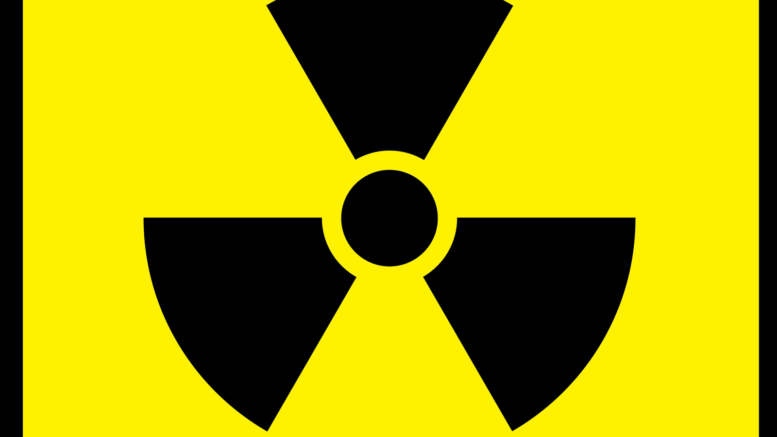Unlike some, I have little fear of nuclear fission power. I’m so convinced that it is safe that I would have no problem unrolling my camping bedding roll and sleeping bag and having a kip inside the Sellafield site. Yes there have been accidents but these accidents have either been caused by badly designed reactors such as Fukashima which have also been subjected to really extreme geological incidents or, as in the case of Chernobyl by poor working practises.
Nuclear power is relatively safe for those who work within nuclear energy plants. Working in a nuclear power station is much safer than for example coal mining or working on an oil or gas rig. Also most of the waste that comes from nuclear plants is low level stuff like contaminated gloves and gowns and that just needs to be boxed up until it’s no longer a problem. Yes there is high level waste but it is a pretty small amount. 1% of spent nuclear fuel is fissile U235 and another 1% is Plutonium.
As well as being relatively safe and producing only a small amount of high level waste, Uranium is also very energy dense. A half inch by half inch Uranium fuel pellet contains the same energy as 149 gallons of oil or 1 metric tonne of coal. Nuclear can produce even less waste and be even more efficient if the fuel is reprocessed into more nuclear fuel. It is possible to use Plutonium as a fissile fuel in an energy generating reactor but there are considerable issues with regards the cooling systems using liquid Sodium metal and controlling the reaction because of control sensitivities than there are with Uranium based reactors although Plutonium can be used in Mixed Metal Oxide Fuel Pellets where Uranium and Plutonium oxides are used to generate electricity.
In addition to being relatively safe and being high in energy density nuclear power has an additional advantage over renewables in that it is a reliable baseload provider of electricity. About the only competitor in the renewable field that can do that is hydroelectric power and not every country has the sort of geography that could allow hydroelectric power. Hydropower would be pretty useless in somewhere like Norfolk in the UK but you can site a nuclear power station there no problem. Wind and Solar also have a multitude of disadvantages when it comes to being a baseload generator of electricity. There’s a place for these methods of course but they are unreliable as baseload generators.
This is the big advantage of nuclear. It can provide that baseload capacity with gaps filled in by renewables, natural gas or even coal. At present coal provides the baseload but not every country as access to coal or natural gas at the sort of prices that they could afford. We have an issue of selective energy poverty where some parts of the world that really need electricity in order to free people from cooking over open fires or have electric lighting but can’t change their situation because they don’t have access to either fossil fuels or expensive and unreliable renewables.
This is where nuclear can provide an answer. Britain for example could generate much more electricity from nuclear than it does already if we had more nuclear power stations either of conventional design or maybe based on the new design of small modular reactors (SMR) that are not refuelled onsite but at an off site specialist facility. The use of SMR’s would remove much of the necessary refuelling equipment that currently has to be installed in conventional nuclear power stations. SMR’s may well make nuclear energy cheaper and more readily available to places that don’t have the space or facilities for a conventional nuclear power station with all the relevant refuelling facilities in house.
At present Britain generates 19% of its electricity from nuclear power. I believe that to avoid energy insecurities that cannot be filled by renewables, that percentage needs to rise to at least 60% to 70%. We need more nuclear power stations in order to meet that level of nuclear power percentages.
But it’s not just Britain that could benefit from more nuclear power. It could be a major development boost for the developing countries as well. Africa for example could up its development potential if it had access to more power and more than that, reliable power. Nuclear could provide this. It might take some cooperation between African nations so that coastal nations with access to sea water for cooling agreed to provide power to landlocked neighbours,but nuclear could be an answer to Africa’s energy problems.
Imagine if you will the coasts of the African continent dotted with lots of little mini Sellafields or Bradwells all generating electricity not just for the citizens of the countries that the generating plants reside in but also for the neighbours who don’t have the right geography for nuclear energy. Nuclearising Africa’s energy needs could also be a major earner for the British, the French and the Americans as these are the Western nations who have the most mature nuclear energy and research sectors. My own view is that it would be better for us and better for the Africans that the West helps Africa go nuclear rather than leave this field and this opportunity to the Chinese. Nuclear is the long term future of electricity generation and I’d rather that future was in the hands of the West rather than the West’s enemies. Of course there will be those who will quite rightly worry about nuclear weapons proliferation and diversion of nuclear energy by products to weapons programmes. This is indeed something to be concerned about and would need to be taken into account when building, planning, fuelling and running nuclear power generation plants. However it should not be beyond the wit of man to make sure that these generating plants have proper nuclear materials accountancy systems.
If the SMR technology takes off there is a major opportunity for Britain if Africa becomes dotted with Western provided SMR based nuclear reactors. Come refuelling time the SMR’s could be lifted out, loaded onto ships and taken straight to Sellafield for refuelling before being shipped back to Nigeria or Namibia, or wherever the reactor needs to go. Meanwhile Sellafield could reprocess the spent fuel into new fuel ready for the next SMR to come in or to to into British reactors for British energy needs.
The main problem as I see it with nuclear energy is the public image of thing. Nuclear power is associated in the public’s mind with nuclear weapons and that doesn’t necessarily need to be the case. Unlike some, I positively glow with enthusiasm about nuclear energy – sorry about the bad pun there – it could solve many of the world’s energy problems that I believe cannot be solved by renewable energy sources alone.






Absolutely agree – the anti-nuclear stance of most environmentalists is hard to understand.
Apart from the Russians, who are ready to market their floating, self-contained PWR reactor ships, there are some other nuclear power developments, e.g.:
Thorcon – a fused Thorium salt reactor, which is intrinsically safe http://thorconpower.com/
The fused salt reactor was developed in the 1960s in the UK. It shuts itself down safely if all ancillary power is lot (cf Chernobyl) It’s scaleable. Thorium is abundant & almost free, as there’s a lot of it in spoil tips from rare earth mining. India & China are developing these reactors. Another advantage is this type of reactor can actually ‘eat’ nasty isotopes and render them less harmful.
The main reason this great technology has been ignored for 50+ years is because there are no military uses – it does not produce bomb materials. Most would see this as an advantage!
Thorium and other similar reactors are a long way off but Small Modular Ones are very nearly here. Being sealed units that are removed for refueling at a separate plant if necessary, makes the nuclear accountancy,such as monitoring the use and transport of materials, that much easier as you don’t have lots of spent fuel rods sitting around in cooling ponds for years at a time on the same site as the energy producing reactor.
I’m also bothered by the environmentalists dismissal of nuclear. Personally I think that it gives some indication that their concerns are not so much environmental but ideological. We’ve seen this before with Greenpeace and it’s vehement objection to the sort of GMO’s that could save lives or help people live healthier lives, things like Golden Rice for example. A genuine environmentalist would embrace nuclear because of its lesser impact on the environment and would also embrace the GMO tech that would save lives and allow more children to reach maturity thereby lessening the pressure on people to have too many children in the hope that some might survive. It worries me that the environmentalists are putting all their eggs in a renewables basket, often renewables that China has a big hand in producing, a technology that is not mature, is unreliable as a baseload generator and totally dismissing nuclear.
Sorry, wrong link, Infinite Power are developing solar, not nuclear
No worries I’ll correct it for you.
“these accidents have either been caused by badly designed reactors such as Fukashima”
My understanding is that Fukashima was a very well designed reactor with numerous safeguards built in. I don’t think that any design could have withstood such a colossal seismic event as well as it did. Following that particular incident, Germany decided that it offered a great excuse to shut down their nuclear power stations. Tsunamis being a constant threat in Germany of course. What a massive failure of political discourse that led to such an absurd policy being implemented rather than being laughed at.
Agree that the cataclysmic event that stymied Fukashima could not have been foreseen but I understand that there were aspects of Fukashima’s design that made it difficult to do an emergency shutdown without there being electric power on site. The problem is the breach of the sea wall messed up the back up emergency diesel generators.
Massive and bad mistake by Germany where the Green party has a significant influence on national affairs. The Greens there have been going after Germany’s nuclear power system for years and this ws their excuse. I wouldn’t be surprised if the Germans were having to buy electricity from those other European nations that still have nuclear.
I’m pro nuclear and always have been and we used to mock the only anti Torness chap in our year at school
On Fukishima: I cannot understand why back-up UPSs & generators are usually installed in basements – illogical
Fission: all the Helium we use comes from nature’s own nuclear fission. That should be used to mock greenies buying Birthday etc balloons or having an MRI scan
I’m sorry, but I flat-out disagree with nuclear.
And no, its not the accidents although whenever they occur they leave a literally radioactive legacy that will last for centuries. Although I will comment on them.
Chernobyl was a bad design (partly because that type of reactor was originally designed for the production of nuclear weapons’ grade material). The “Elephant’s foot” at Chernobyl though far less lethal than it initially was is still slowly eating its way out of the reactor building. If it reaches the water table it will trigger another environmental catastrophe in the area (partly due to the fact that parts of it have disintegrated to radioactive dust).
In fairness I should note that the area around Chernobyl has recovered well and is now more biodiverse that it was before the accident, largely due to the removal of (most of) the human population.
The actual reactors at Fukashima were sound designs, but a series of catastrophic mistakes were made in the siting of the plant that rendered them dangerous. As PCar notes the installation of the backup generators in the basements was illogical and contributed to the multiple meltdowns. The second major flaw was the lowering of the nuclear installation by 10 metres from 35m above mean sea-height to 25m, this to make it easier to pump in the secondary coolant of sea-water but with the consequence that the reactor buildings were then vulnerable to a large tsunami.
Put together these mistakes made a disaster, in one of the world’s most seismically active areas, almost inevitable.
However, my real objection to nuclear power isn’t the risk of meltdowns or even core-fires (Chernobyl), it is the safe disposal of nuclear waste and the decommissioning costs of old nuclear power stations that have reached the end of their lives.
On nuclear waste. The high level stuff decays quickly, the low level stuff is (more or less) harmless truth be told, but the intermediate level waste needs safe storage for tens of thousands of years before its activity will fall to safe levels (i.e. close to merging into the background). These are longer times than humanity has had anything that might pass as civilisation. Of the two methods of storage, Geological vaults and deep bore-shafts, neither has been put into action. Geological storage has the problem that suitable geological formations (very stable, very dry etc.) are rare when such stability must exist for the time frames involved.
In the time over which this method has been discussed America alone has produced enough intermediate waste that they now need two such storage facilities.
Deep bore-holes are a new technology and each can only store a small amount of waste and the problems of drilling a shaft wide enough to take an oil-drum to a depth of several kilometres (well below the levels of ground water etc.) have not yet been solved.
Both are expensive due to the ever-increasing scale that is needed.
We are only just starting to realise the decommissioning costs for the simple reason that it is only now that the first generation plants are being decommissioned.
Doing this is already acknowledged as a multi-generational activity by the time that the core can be safely dismantled by tele-operation. Even then some of the dismantled materials would be intermediate waste needing hundreds or thousands of years of safe storage.
During all this time people will be needed on site 24/7/365 thanks to the risk of terrorism. It would be very easy for an (admittedly suicidal) terrorist to build a “dirty bomb” from the irradiated and radioactive materials contained in core and some parts of the ancillary structures of a “decommisioned” reactor.
Thus the costs of conventional nuclear power, taken over the lifetime of the plants, make it the most expensive way to generate electricity of all and still have a large number of unresolved problems with the safe storage/disposal of wastes for times that have, historically, seen the rise and fall of multiple civilisations.
Now, it may well be as EdP says that ThorCon (I’ve not had a chance to research it yet) is intrinsically safe etc. I can remember many such claims about various fluid bed and other reactor designs going back to the 1970s. None were ever built (or in the case of Fast breeder reactors they were found not to work as anticipated). IMO Thorcon and other designs have yet to answer the decommissioning question and waste stream questions.
As yet no such designs have made it to market, so the UK is going to build conventional plants which are massively expensive to build and increasingly so due to the need to protect the plants from terrorism, often have commissioning problems (e.g. Flammanville, now at least 10 years behind schedule) and are going to be very expensive (in 50 years time or so) to decommission safely.
So, no, I don’t see nuclear as the way forward unless the much heralded fusion reactors (“we’ll have them in 10 years”, first said 50 years ago) actually do get built because they do solve most of the problems – no radioactive fuel waste, relatively little irradiaton of the core, so much reduced decommissioning costs.
What the solution is I frankly have no idea. “Green” technologies often aren’t (the carbon fibre used in wind turbine blades is NOT an “environmentally friendly” material, PVcells contain toxic materials), or – like HEP – are also damned expensive and require suitable geography.
I’m not saying the problems are insoluble or intractable, but nuclear power is a massive exercise in punting a deadly radioactive and very large can a very long way down the road and hoping our descendants can solve the problem we’ve created and continue to create.
Jon MC raises the problem of radioactive waste: this is indeed a problem – With the current fuel cycle.
It is solved by Thorium molten-salt, which can ‘eat’ intermediate and high level wastes: thir own and that already existing. The end result is no more radioactive than the ore originally mined: so vitrify it and shove it back down the mine it came out of.
But thorium molten-salt reactors aren’t here yet (though we may be able to buy them from China in a decade, if theywant to sell to us. Not from India, they intend to use thorium as a modification to the existing solid fuel system: useless for this purpose, but they have lots of it).
So yes, make lots of SMR now, while researching and prototyping molten salt reactors, to clean up all the waste from the SMRs in a decade or two.
But you just know it isn’t going to happen. Never mind the public, the politicians listen to whoever scream loudest, and the greens are in full screeching frenzy.
By the time the penny drops, it will be far too late. It probably is already.
Just like the closing scene in Cat’s Cradle, the last words of Boris will be “But the focus groups told me the people wanted to freeze rather than have electricity!”.
Welcome to F211 Tim. You’ve hit the nail on the head regarding the waste problem with the words ‘with the current fuel cycle’. I like the idea of Thorium molten salt, but it is future tech. Worried that the Chinese are so far ahead with this. Britain should be pushing ahead with this but as with Germany we have the problem of the idiot Greens who will get in the way. Like you I believe that SMR’s are the way forward, at least with regards the current conventional nuclear fuel cycle. Agree with your last sentence sadly. Boris Johnson’s focus groups are probably made up of those whom we should least trust with Britain’s energy security.
UK should be buying Nuclear Power stations from South Korea. Have a look at how fast and cheaply South Korea built them in Saudi Arabia and other arab states
We’re not in EU now, so no excuses
Thorium reactors do seem promising, shame world abandoned in their quest for more weapon grade plutonium
Waste: encase in lead-glass and dump mid-ocean
Geography:
Why are they predominantly on West Coast of England? For reassuring safety they should be on East coast as prevailing wind usually from south-west
Clarification
Back-up Generators and UPSs
Most, not just at Nuclear Power stations, are in basement or outside on same level. Not much use in a flood/water-leak or a ground attack
Agree with you on Sth Korea. It’s countries like this we should be dealing with when it comes to nuclear energy, not the Chinese.
Re Thorium, maybe we would have gone down that route were it not for the Manhattan Project and the need for a nuclear weapon at the time.
Vitrification I believe that Sellafield were pioneers of this. I’d be in favour of burying it deep just in case in the future it becomes a needed resource.
Re East Coast. One reason I could think of is the 1953 flood. Fear of a repeat may weigh heavy on planner’s minds.
UPI / Gen. These items need to be in the safest place possible. Sometimes ground level of basement isn’t always the safest place.